Core
- Core procedures and functions to handle strings (and other types of data), event logs, scheduled tasks, file systems, long-running operations, and similar.
- Standard roles (Administration, Full Rights, Thin Client Launch, etc.).
- Secure data storage, automatic tracking of metadata object renaming, plus other basic services for developers.
- Basic tools for application administrators (event logs, window title settings, etc.).
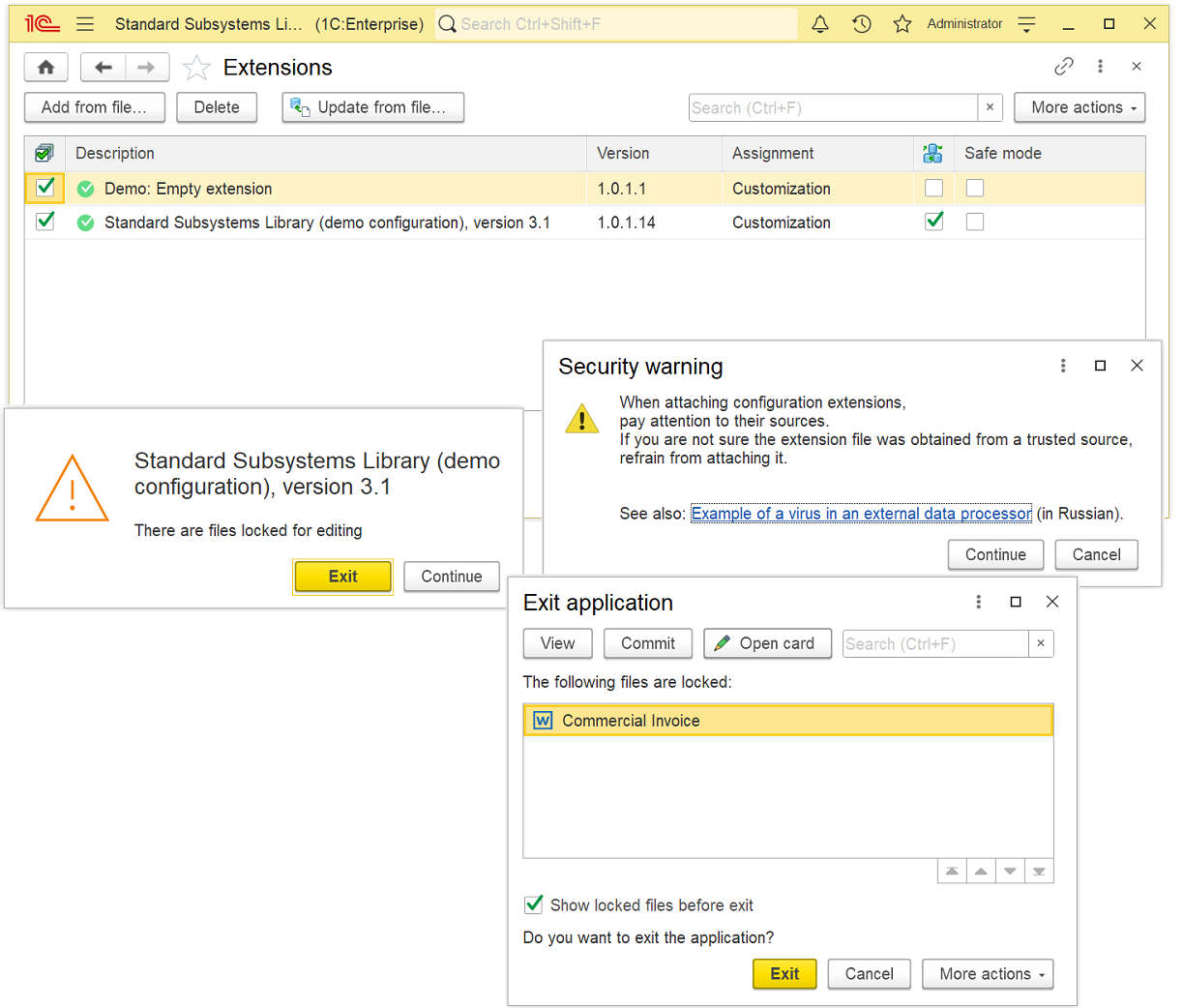
Barcode Generation
- API for generating barcode images under EAN8, EAN13, EAN128, Code39, Code93, Code128, Code16k, PDF417, ITF14, RSS14, EAN13AddOn2, EAN13AddOn5, QR, S1DataBarExpandedStacked and Data Matrix standards.
Attribute Locks
- API to ensure that required object attributes essential for respective objects (key attributes) contain data.
- Edit lock for key attributes in saved objects.
- Check for permission to change key attributes by authorized users.

National Language Support
- Support for multilingual data.
- API to run applications in several languages.
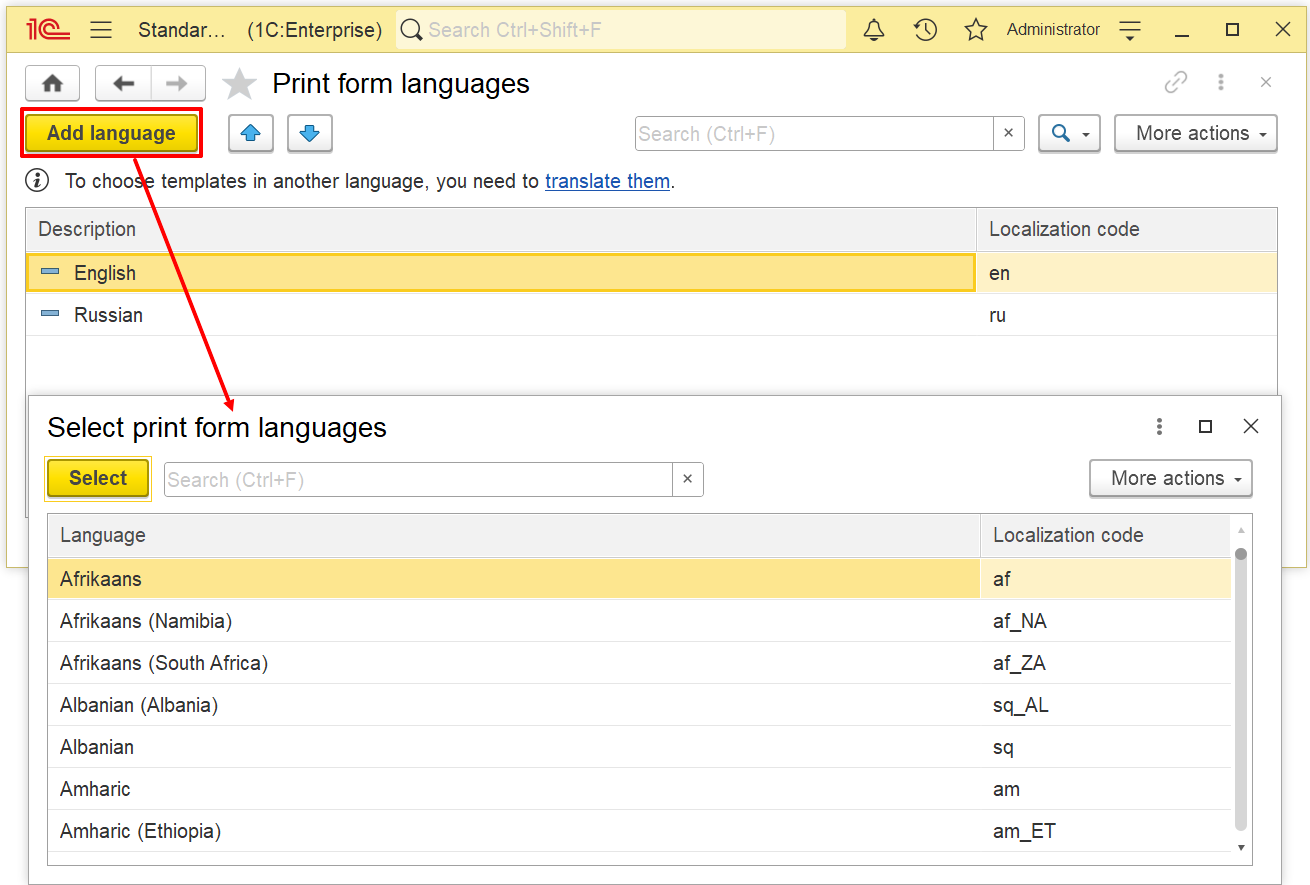
Infobase Version Update
- Initial filling of infobase with data and further update of data on configuration version change.
- Displaying of information regarding the changes in the new version of the configuration.
- API to run update handlers in exclusive, online, and deferred modes.
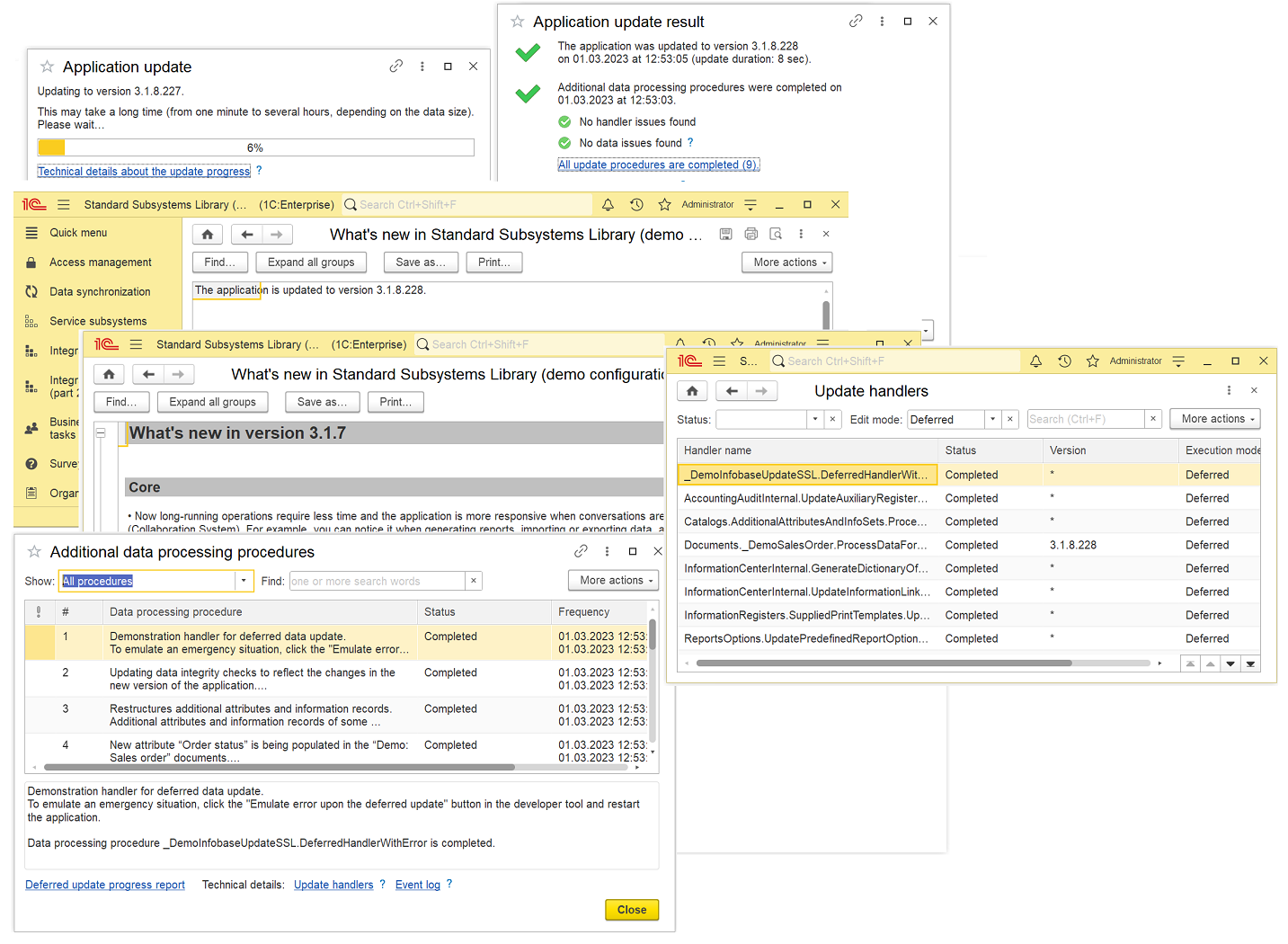
Attachable Commands
- API to output dynamically attachable commands to application objects, lists, and logs.
- Output of commands for creating additional reports and data processors based on or due to added data (when used with subsystem Additional Reports and Data Processors).
- Output of commands in logs, lists, and documents in the context of the types of selected objects and values in their attributes.
- API for integration with configuration extensions.
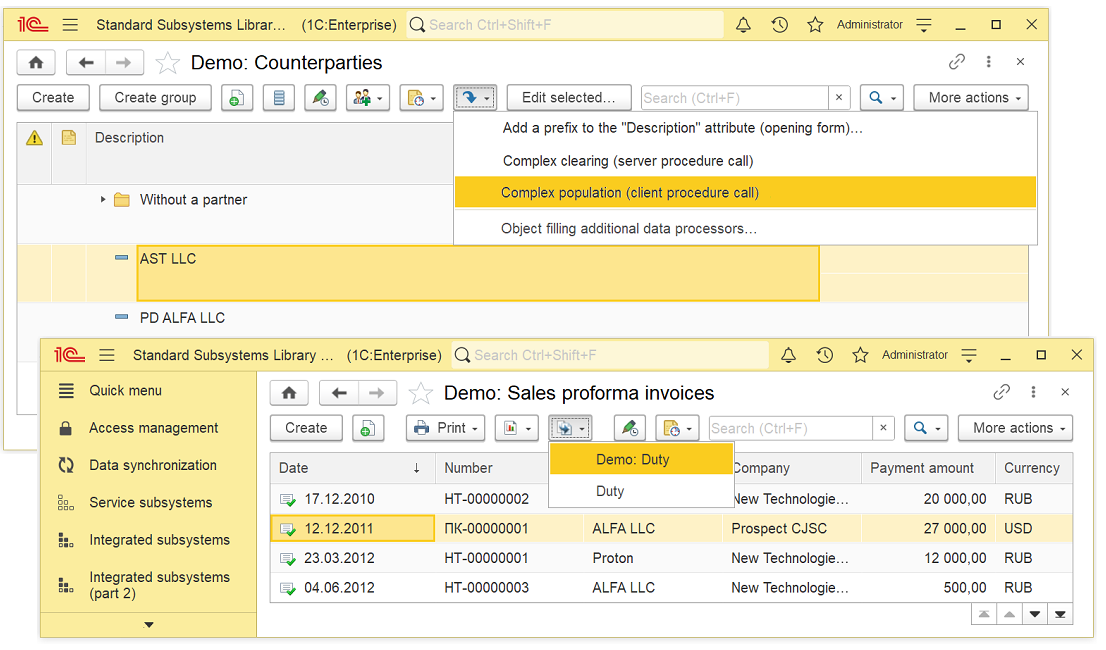
Object Prefixes
- Automatic assignment of object prefixes per application settings.
- Prefixing of objects in the context of infobases and items in the list of organizations (if included with the configuration).

SaaS Mode
- Basic functionality for configurations to operate in the data separation mode, which is necessary to run applications under the service model together with 1C:Cloud Technology Library.
- Auxiliary subsystems that have to be included in a configuration along with the respective main subsystem. For example, if subsystem File Management is to be deployed, this subsystem must be used in SaaS as well.
Monitoring Center
- Collects depersonalized statistics on the use of configurations and sends this data to a quality control center.
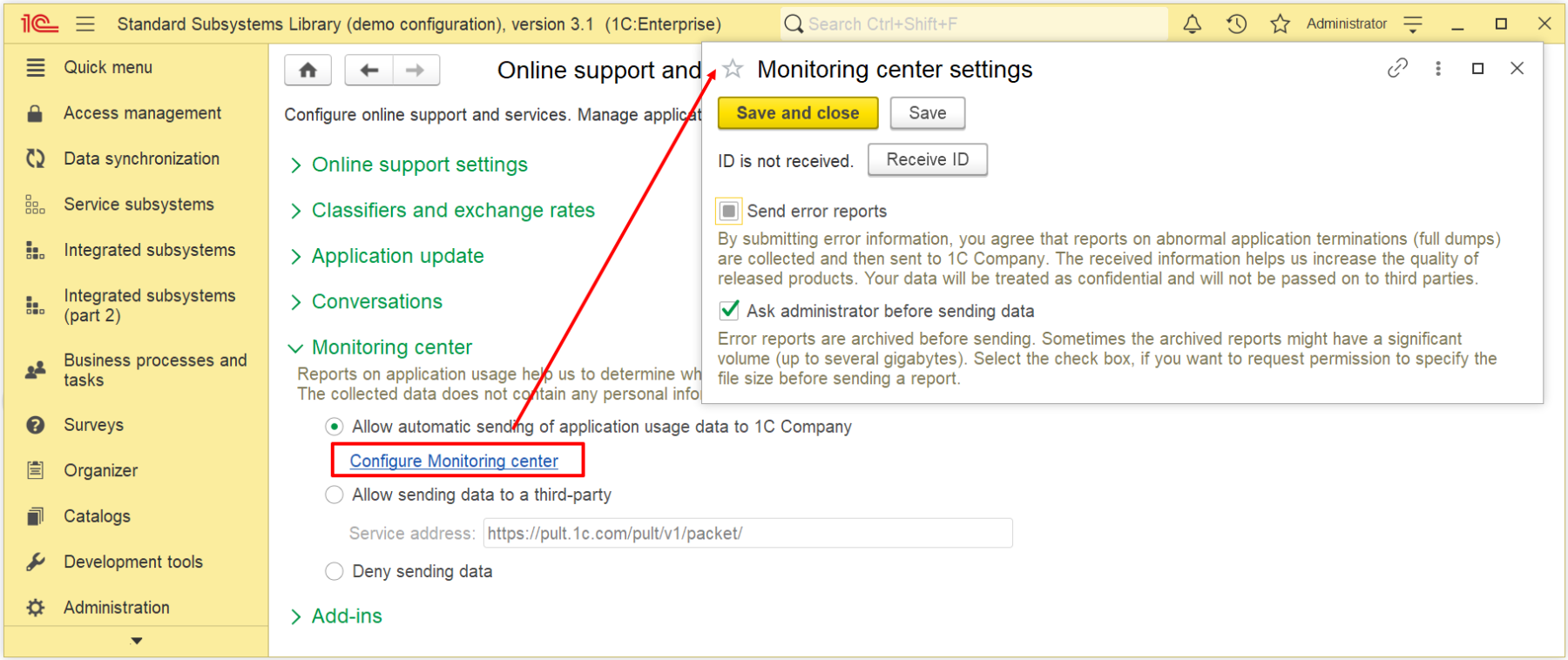
Next page: Master Data and Classifiers
Get more details: Downloads

